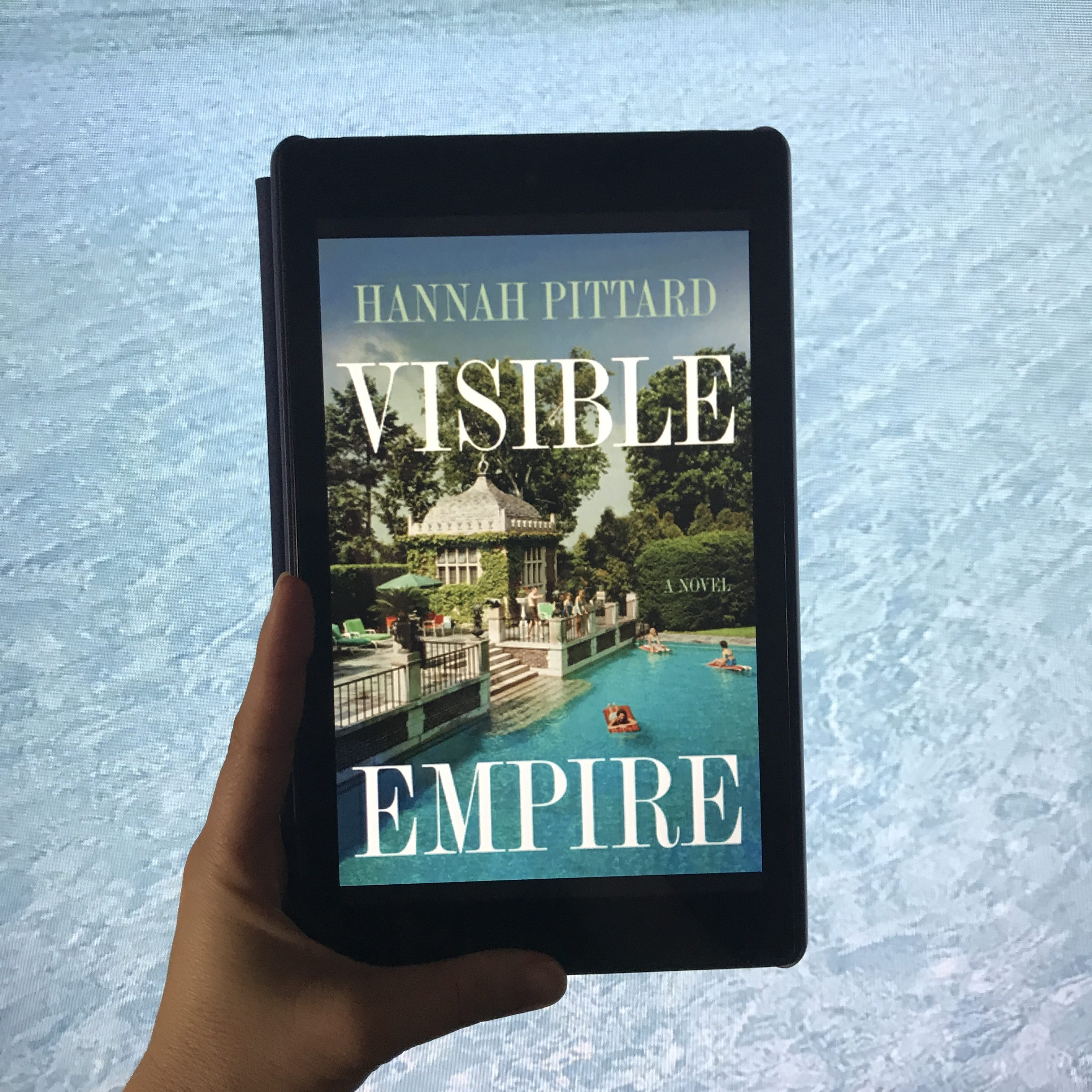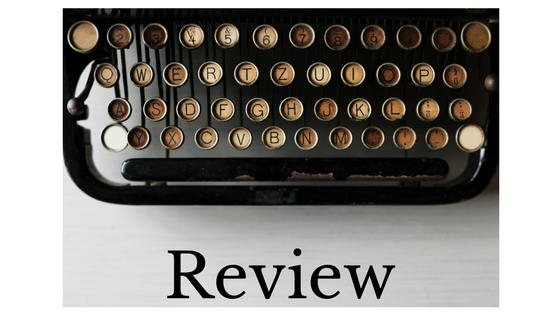I received a digital ARC of this book from Houghton Mifflin Harcourt on NetGalley. I’m grateful to Houghton Mifflin Harcourt for their generosity and am happy to post this honest review. All opinions are my own.

Visible Empire: Epigraphs
Atlanta has suffered her greatest tragedy and loss.
-Mayor Ivan Allen
Many people have been asking, “Well what are you going to do?” And since we know that the man is tracking us down day by day to try and find out what we are going to do, so he’ll have some excuse to put us behind his bars, we call on our God. He gets rid of one hundred twenty of them in one whop…and we hope that every day another plane falls out of the sky.
-Malcom X at the Ronald Stokes Protest in L.A.
Foundation/Synopsis
The foundation of Visible Empire is the 1962 fatal crash of an Air France jet transporting 121 of Atlanta’s art patrons—the wealthy, white, upper-crust of the city. From there, Pittard builds her tale of those left behind—the grieving remainder of the muckety-mucks, the white serving class, and the subjugated black population of the city. From here we meet Roger, grieving the loss of his mistress and parents-in-law; Lily, reeling from the double-yet-different-losses of her parents and Roger; Piedmont, an African-American youth pulled into Robert and Lily’s orbits at a time of upheaval in his own life; and Stacy, a white serving class woman who sees an opportunity and takes it.
Invisible and Visible Empires
The title Visible Empire is actually a nod to the full name of the Ku Klux Klan—the Invisible Empire of the Knights of the Ku Klux Klan. If the Invisible Empire of the KKK is the shadowy, hooded phantoms that move at night, the overt racism of 1962 Atlanta is the Visible Empire. It is the status quo of wealth and privilege that is ignored until tragedy literally falls from the sky. Black men and women were beaten and died every day in the South in the 1960s and no one batted an eye. Over one hundred white people from Atlanta die, and suddenly the world is watching.
Pittard makes her intentions clear in the quotes she chooses for her Epigraph, including the two quotes I started this review with. The loss is seen as monumental to the city—The New York Times runs articles on this great loss and its impact to the city. In contrast at the time, The New York Times hadn’t once run an article on the massive loss of black life in the city in the preceding years. While most of us see the KKK as extremist and wrong, far fewer examine the status quo of white privilege that sees the loss of one hundred white lives as catastrophic and the poisoning of hundreds of black lives in Flint, Michigan as old news. Visible Empire was set in 1962 but in many regards could be set today.
Characters
The story is presented through a series of alternating character vignettes. Robert is a journalist, embroiled in an affair with a younger colleague who was on the doomed flight. Lily is Robert’s wife, pregnant with her and Robert’s first child, sent reeling at the loss of her parents and her abandonment by Robert. Intersecting with their story is that of Piedmont, an eighteen year-old black youth on the precipice of identity—faced with the choice of whether he will accept the status quo, keep his head down, and stay safe or whether he will stand and fight, link arms with other black men and women in the south saying that they have had enough. Finally there is Stacy, a character whose story is only tangentially connected to the Robert-Lily-Piedmont narrative. Stacy has grown tired of her hardscrabble life, believes she deserves more, and takes an opportunity to impersonate one of the left-behind upper class Atlantians.
Robert
Robert’s character is interesting—when I sat down to describe him, I can only come up with negative descriptors—he’s the epitome of white privilege, married into money, selfish, and willing to throw away everything—and yet—of course!—because he’s white, his bad choice roosters don’t really come home to roost. I should hate him. At times I did. But damn it, Pittard make me want the best for him. There’s something about him that made me want him to stop throwing everything he had away, to stop making bad choices, and to set things right.
Lily
Much like her name, Lily is the pure white character in the book. She’s the virtuous, wronged woman, the woman in need of rescue. While she’s one of the muckety-muck class, her tragedy makes her sympathetic and her treatment of Piedmont shows the reader that she’s not really like one of them. Lily is perhaps the most trope-y of the characters, acting her part as the damsel in distress. When Robert leaves, Lily starts to learn to stand on her own. Though Piedmont quickly enters her life and she gets another man she can lean on. I’m torn on whether I think she ultimately learned to stand on her own or just switched out her men. She’s likeable and it’s clear Pittard made an effort to make her seem independent. I’m just not entirely sure it worked. Where Piedmont became a vehicle to present Lily to the reader, in many ways Lily served that role for Robert. I had no problems with Lily as I was reading and was sympathetic to her and what she was going through; yet the longer I sit with the book, I’m not sure I really got to know her.
Piedmont
Pittard is a white author and I’m a white reader so my ability to analyze the characterization of Piedmont, the only black main character, is limited. With that said, of all the characters, Piedmont seemed the most well-rounded to me and was my favorite character. Where Roger’s wrestling with who he is as a man reeks of privilege and self-pity, Piedmont’s exploration of what it means to be a black man coming of age in 1962 Atlanta seemed real and drew me in. The choices he makes are understandable, though often unwise (so, fairly typical of an eighteen year-old). And yet, as a reader you still root for him. When he stands on his own or interacts with Roger, he is at his strongest. When he interacts with Lily, he faded a bit for me—partially as a consequence of Pittard using his interactions with Lily to provide opportunities for growth for her. I want the best for him and though I recognize he is simply a fictional character, there’s a part of me that hopes wherever he is, he turned out ok.
Stacy
Distinct from the Lily-Robert-Piedmont story line is that of Stacy/Anastasia. I have to admit that I hated her character, though this seems intentional on the part of Pittard. Stacy has a sympathetic enough backstory to give her a likeable dimension, though the choices she makes reveal fairly quickly that her brother’s accusation of her narcissism is accurate. Just when I was at the point of thoroughly hating her, there’s an unexpected twist in her story. She goes from being the con artist to the mark. This created a conundrum for me—I didn’t like her as a character, I felt sorry for her victim; but then these roles shifted. Stacy’s entire storyline, while intersecting with Lily-Robert-Piedmont enough that it didn’t feel entirely disparate, stood alone. It raised questions of who we consider victims and who we consider perpetrators. It introduced a “poor white” element to the story that was otherwise missing within the exploration of rich Atlanta’s relationship with its black population.
My major issue with Stacy’s storyline is the treatment of the two LGBTQ characters who appear in Stacy’s chapters. We are given enough background to see how they came to be the way they are (which isn’t to say how they came to be gay, but how they came to be the kind of people who make the kind of choices they make). Neither is portrayed particularly kindly and both are villains in their own rights—this negative portrayal felt stereotypical to me. An LGBTQ character can absolutely be a villain in your book; however, if you’re going to have negative gay characters, it feels like you should damn well include at least one virtuous one. To Pittard’s credit, everyone in this book is behaving badly except Piedmont and arguably Lily so it’s not like the only evil characters are gay; yet this treatment still felt unbalanced.
Recommended
Ultimately, I do think the point Visible Empire attempts to make is an important one. The book is well-written and it moves at a good pace—my dislike of Stacy made her chapters feel long at times, though this had more to do with my feelings for the character than it did with missteps in Pittard’s writing. Pittard is obviously skilled at making you feel strongly about her characters—I rooted for Robert while being exasperated with him and thinking he did not deserve my affection. I felt sorry for Stacy at the same time I would never want to actually meet her in real life. Visible Empire isn’t going to make my top ten list for the year but if you are interested in historical fiction and/or books that explore racial themes that still apply, I do think it is worth your time. It is one I would recommend for someone looking for a book that reads a bit lighter in writing style but packs a message and for book clubs, since I think this book will draw a diversity of opinions.
Notes
Published: June 5, 2018 by Houghton Mifflin Harcourt (@hmhbooks)
Author: Hannah Pittard (@hannahpittard)
Date read: May 22, 2018
Rating: 4 stars

